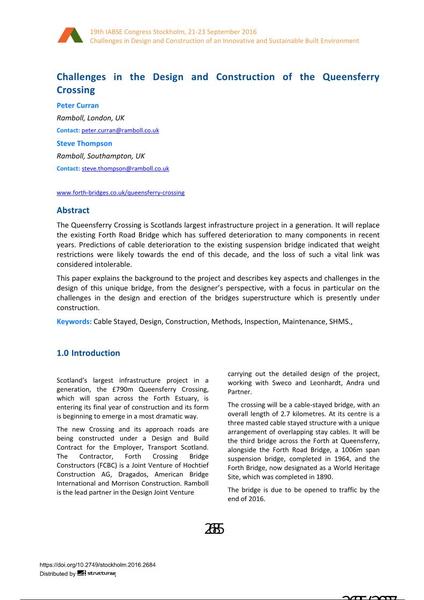Challenges in the Design and Construction of the Queensferry Crossing

|
|
|||||||||||
Détails bibliographiques
| Auteur(s): |
Peter Curran
(Ramboll, London, UK)
|
||||
|---|---|---|---|---|---|
| Médium: | papier de conférence | ||||
| Langue(s): | anglais | ||||
| Conférence: | IABSE Congress: Challenges in Design and Construction of an Innovative and Sustainable Built Environment, Stockholm, Sweden, 21-23 September 2016 | ||||
| Publié dans: | IABSE Congress Stockholm, 2016 | ||||
|
|||||
| Page(s): | 2685-2692 | ||||
| Nombre total de pages (du PDF): | 8 | ||||
| Année: | 2016 | ||||
| DOI: | 10.2749/stockholm.2016.2684 | ||||
| Abstrait: |
The Queensferry Crossing is Scotlands largest infrastructure project in a generation. It will replace the existing Forth Road Bridge which has suffered deterioration to many components in recent years. Predictions of cable deterioration to the existing suspension bridge indicated that weight restrictions were likely towards the end of this decade, and the loss of such a vital link was considered intolerable. This paper explains the background to the project and describes key aspects and challenges in the design of this unique bridge, from the designer’s perspective, with a focus in particular on the challenges in the design and erection of the bridges superstructure which is presently under construction. |
||||
| Mots-clé: |
design méthodes
|
||||
